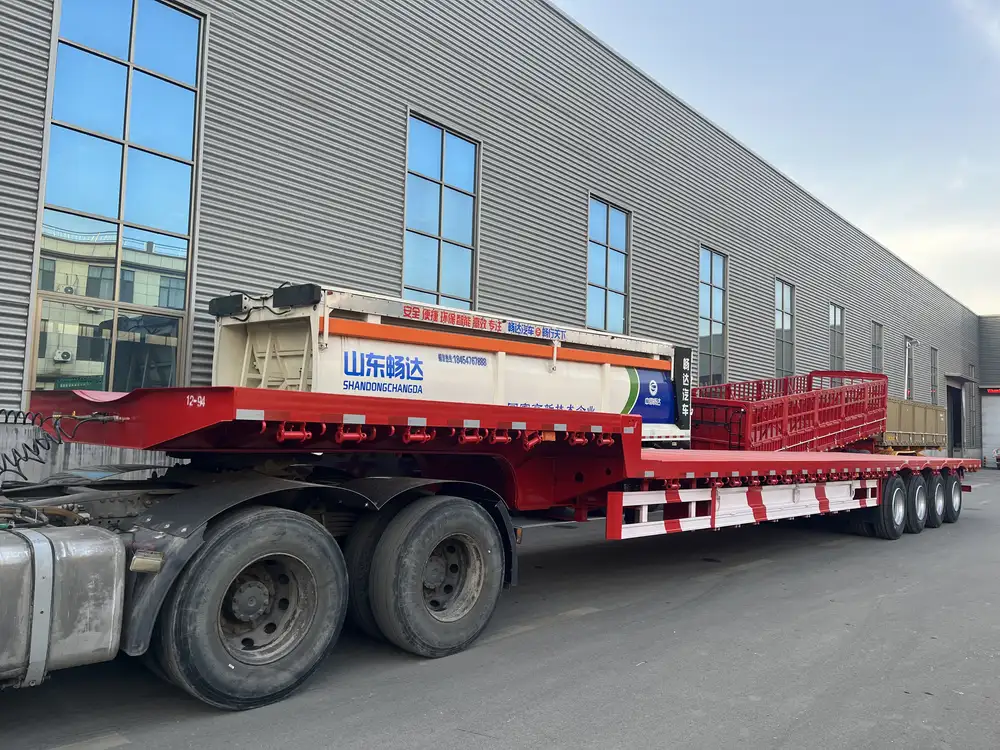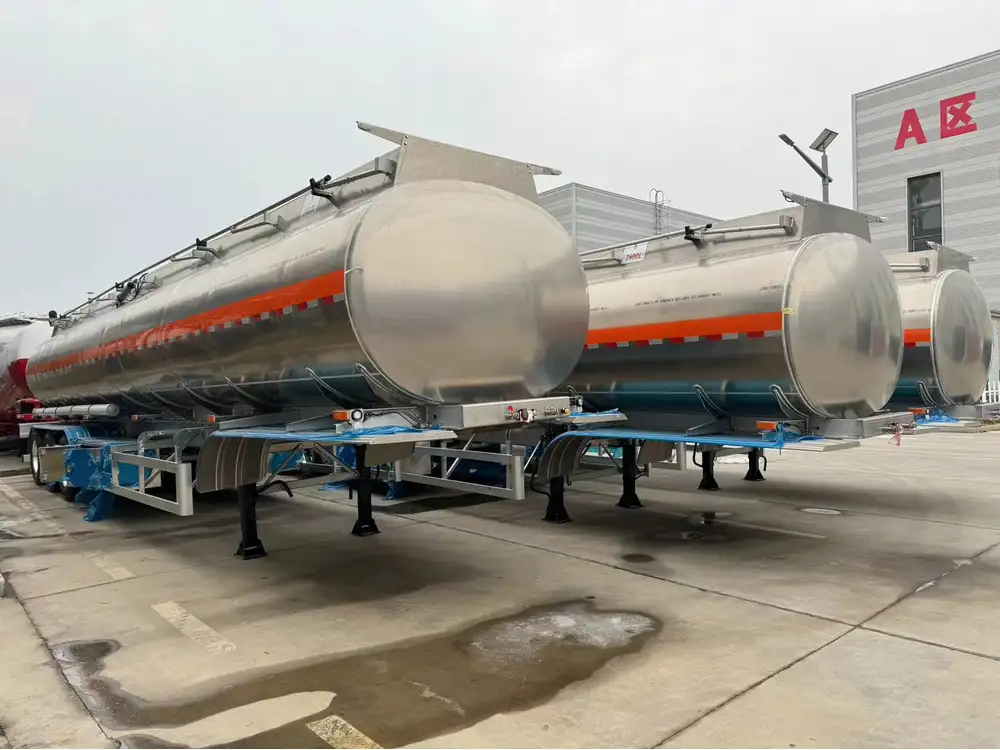When investing in a dump trailer, it’s crucial to factor in depreciation—an often overlooked aspect that can significantly affect your financial planning and asset management. In this article, we delve deep into the nuances of dump trailer depreciation, offering insights, comparisons, and structured analysis that can aid both current and prospective owners in navigating this complex financial landscape.
What is Depreciation?
Depreciation is defined as the reduction in the value of an asset over time, primarily due to wear and tear or obsolescence. For dump trailers specifically, depreciation reflects their gradual loss of value as they are used for hauling materials and experience standard wear. Understanding how depreciation impacts your dump trailer can inform purchasing decisions, tax planning, and resale strategies.
Types of Depreciation
Straight-Line Depreciation: The most straightforward method, wherein the asset loses an equal amount of value each year. This is calculated as follows: [ \text{Annual Depreciation} = \frac{\text{Cost of Asset} – \text{Salvage Value}}{\text{Useful Life}} ]
Declining Balance Depreciation: An accelerated method where a higher expense is recorded in the earlier years of the asset’s life. This is useful for assets that may lose value quickly at the beginning.
Units of Production Depreciation: This method bases depreciation on the actual usage of the trailer, making it suitable for dump trailers used rigorously or in varied capacities.

Depreciation Schedule Examples
To illustrate, let’s consider a hypothetical dump trailer that costs $30,000, with a useful life of 10 years and a salvage value of $5,000. We can represent the depreciation under different scenarios:
| Year | Straight-Line Depreciation ($) | Declining Balance Depreciation ($) | Units of Production Depreciation ($) |
|---|---|---|---|
| 1 | 2,500 | 6,000 | 3,000 |
| 2 | 2,500 | 4,200 | 2,500 |
| 3 | 2,500 | 2,940 | 4,000 |
| … | … | … | … |
| 10 | 2,500 | 0 | 2,500 |
Factors Influencing Dump Trailer Depreciation
Numerous factors contribute to the rate and manner of depreciation for a dump trailer. Understanding these can offer insights for optimal purchase and resale timing.
1. Age of the Trailer
The age directly correlates with depreciation. New trailers lose value much faster compared to older models, especially within the initial years of ownership.

2. Usage Level
Heavy usage typically accelerates wear and can lead to steeper depreciation rates. Conversely, trailers used less frequently may retain value better.
3. Maintenance and Care
Proper maintenance can mitigate depreciation. Trailers that are regularly serviced and maintained will generally retain value better than those that are neglected.
4. Market Demand
Changes in market demand can affect resale values and thus the perceived depreciation. A decrease in demand for dump trailers can lead to increased depreciation rates.

5. Technological Advances
New and improving technologies can make older dump trailers less desirable, increasing their depreciation as companies prefer newer models with enhanced features.
Calculating Dump Trailer Depreciation
Calculating dump trailer depreciation requires an understanding of its purchasing price, anticipated useful life, and salvage value. Let’s examine this through a detailed example.
Step-by-Step Calculation
Assumptions:
- Purchase Price: $25,000
- Estimated Useful Life: 10 years
- Estimated Salvage Value: $3,000
Step 1: Calculate Annual Depreciation (Straight-Line Method)
[ \text{Annual Depreciation} = \frac{25,000 – 3,000}{10} = 2,200 \text{ per year} ]This means that every year, $2,200 would be deducted from the trailer’s value.

Yearly Value Summary
| Year | Acquired Value ($) | Depreciation ($) | Year-End Value ($) |
|---|---|---|---|
| 1 | 25,000 | 2,200 | 22,800 |
| 2 | 22,800 | 2,200 | 20,600 |
| 3 | 20,600 | 2,200 | 18,400 |
| 4 | 18,400 | 2,200 | 16,200 |
| 5 | 16,200 | 2,200 | 14,000 |
| 6 | 14,000 | 2,200 | 11,800 |
| 7 | 11,800 | 2,200 | 9,600 |
| 8 | 9,600 | 2,200 | 7,400 |
| 9 | 7,400 | 2,200 | 5,200 |
| 10 | 5,200 | 2,200 | 3,000 |
Implications of Depreciation
Understanding the depreciation of dump trailers plays a crucial role in financial planning. Here are some implications to consider:
- Tax Deductions: Businesses can often claim depreciation as a tax deduction, decreasing taxable income.
- Timing the Sale: Knowing how depreciation affects value can assist in determining the optimal time to sell.
- Asset Allocation: As assets depreciate, businesses must consider reallocating or reinvesting in more efficient equipment.
Resale Value Considerations
When it’s time to sell a dump trailer, several factors will influence its resale value, which may not always align precisely with depreciation schedules.

Key Resale Value Factors
Condition: A well-maintained trailer in good working order will retain value much better than a worn-out model.
Brand Reputation: Established brands often depreciate at a slower rate due to warranty, support, and customer loyalty.
Market Conditions: Economic downturns can lead to lower resale values, while increased infrastructure spending can boost demand for used trailers.
Customization: Unique features or upgrades can attract buyers, thereby softening the blow of depreciation.
Documentation: Keeping service records and repair history can boost buyer confidence and elongated trailer life valuation.
Conclusion
In conclusion, understanding the depreciation of dump trailers is not merely an exercise in financial comprehension; it’s a pivotal component of strategic ownership. By grasping how depreciation operates—both theoretically and practically—trailer owners can make informed decisions that minimize loss and potentially maximize returns on their investments. We encourage you to keep abreast of changes in the market and technology and to apply diligent maintenance to prolong the life of your equipment. With the right knowledge and tools at hand, you can navigate the complexities of asset management with confidence, ensuring that your dump trailer serves its purpose efficiently while minimizing depreciation.



